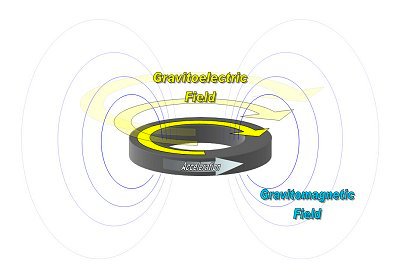Faraday’s Law is that a changing electric flux induces a magnetic flux. Now, physicists working under an EA contract think they’ve empirically observed the gravitometric analogue:
Just as a moving electrical charge creates a magnetic field, so a moving mass generates a gravitomagnetic field. According to Einstein’s Theory of General Relativity, the effect is virtually negligible. However, Martin Tajmar, ARC Seibersdorf Research GmbH, Austria, and colleagues believe they have measured the effect in a laboratory.
[…]
Their experiment involves a ring of superconducting material rotating up to 6 500 times a minute. Superconductors are special materials that lose all electrical resistance at a certain temperature. Spinning superconductors produce a weak magnetic field, the so-called London moment. The new experiment tests a conjecture that explains the difference between high-precision mass measurements of Cooper-pairs (the current carriers in superconductors) and their prediction via quantum theory. They have discovered that this anomaly could be explained by the appearance of a gravitomagnetic field in the spinning superconductor (This effect has been named the Gravitomagnetic London Moment by analogy with its magnetic counterpart).Small acceleration sensors placed at different locations close to the spinning superconductor, which has to be accelerated for the effect to be noticeable, recorded an acceleration field outside the superconductor that appears to be produced by gravitomagnetism. “This experiment is the gravitational analogue of Faraday’s electromagnetic induction experiment in 1831.
The accompanying graphic really explains it much better:
